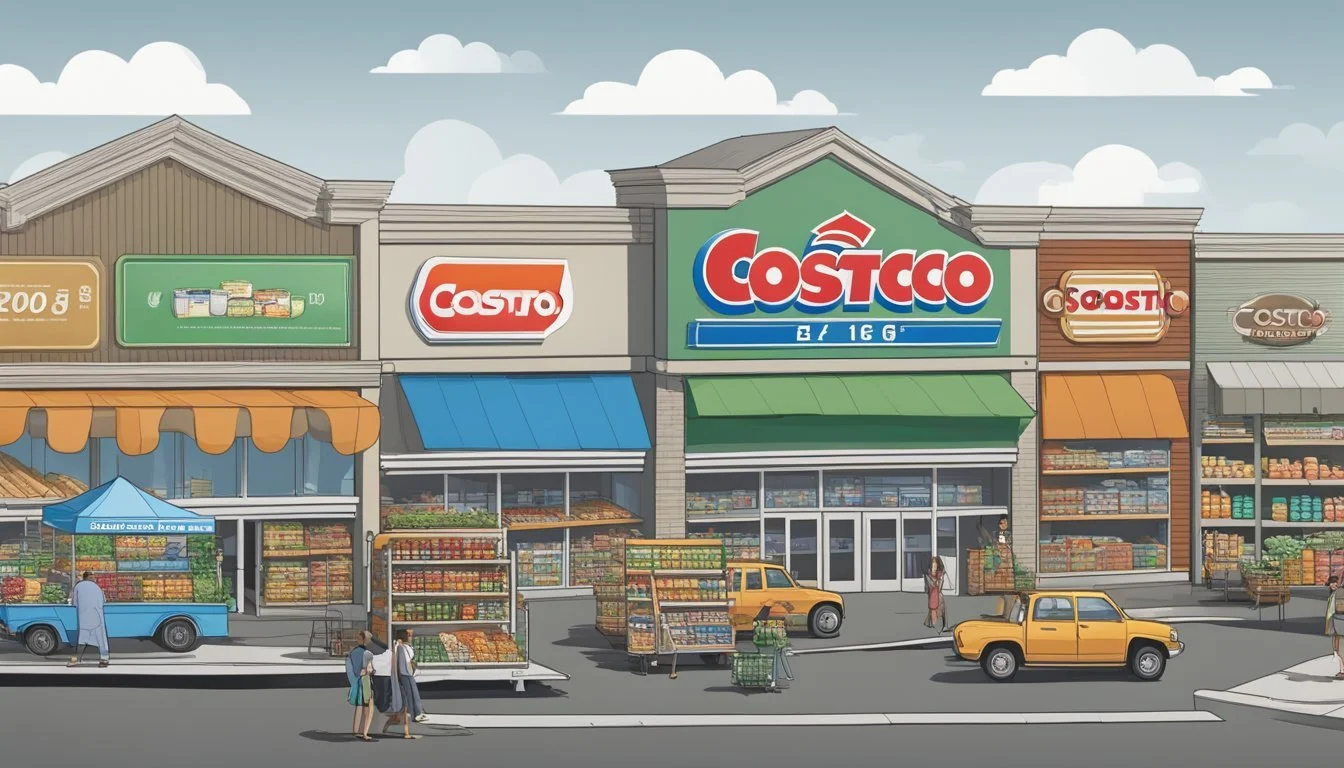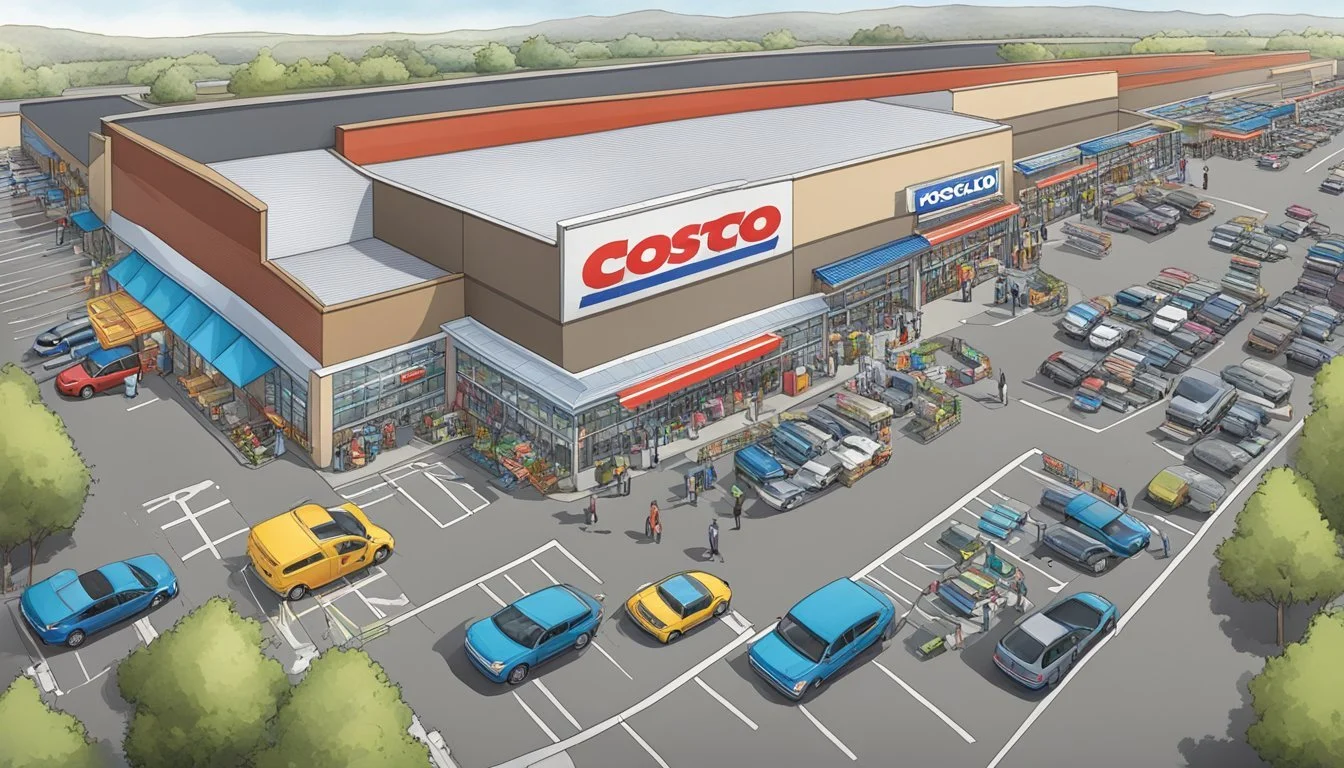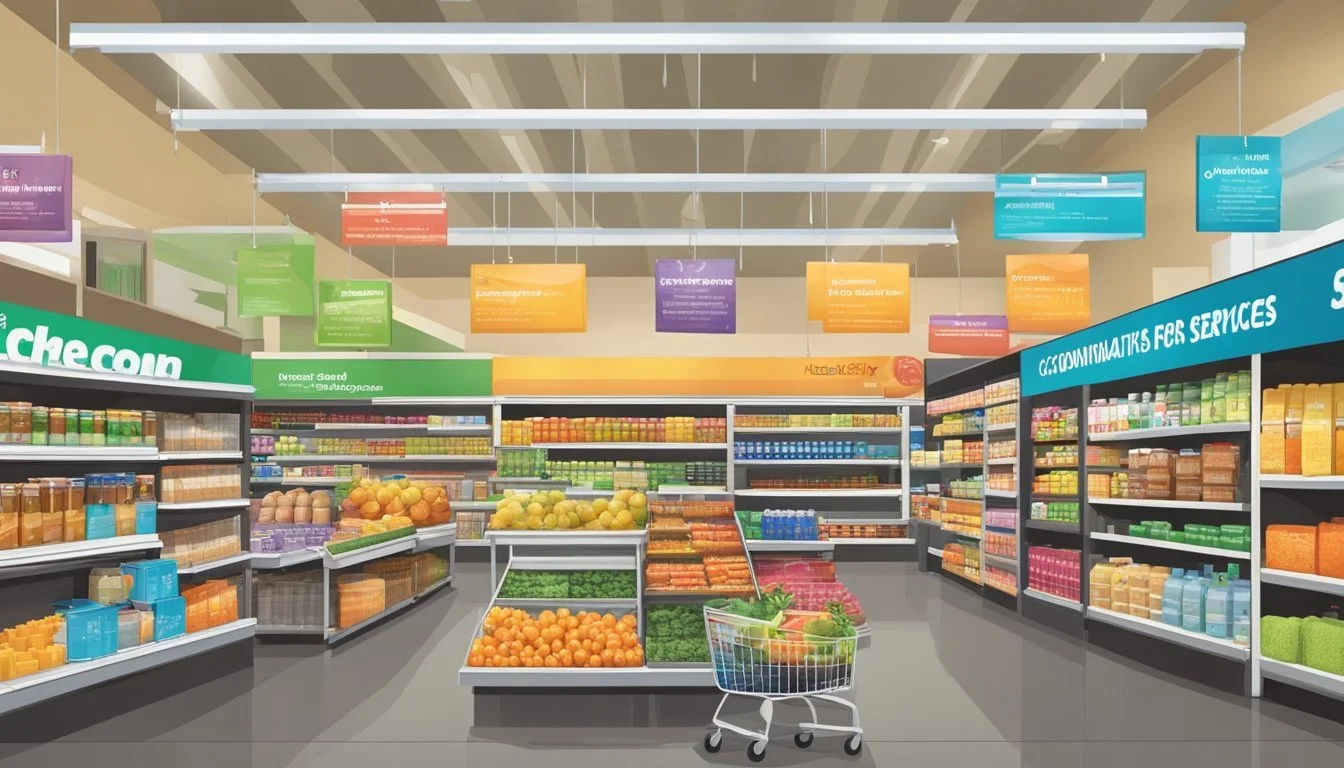Costco vs Five Below
Comparing Prices, Selection, and Value
Costco and Five Below are two distinct retail chains with vastly different business models and product offerings. Costco is a membership-based warehouse club known for bulk purchases and a wide range of groceries, household items, and electronics. Five Below, on the other hand, is a discount store chain that primarily sells items priced at $5 or less, focusing on trendy merchandise for teens and pre-teens.
When it comes to grocery shopping, Costco is the clear winner between the two, as Five Below is not primarily a grocery store. Costco offers a extensive selection of food items, including fresh produce, meats, dairy products, and pantry staples. The warehouse club is known for its competitive pricing on bulk purchases, which can lead to significant savings for families and frequent shoppers.
While Five Below may offer some snacks and candy, its limited grocery selection cannot compare to Costco's comprehensive offerings. Costco's approach to selling groceries in larger quantities often results in lower per-unit prices, making it an attractive option for budget-conscious consumers looking to stock up on essentials.
Company Profiles and Histories
Costco and Five Below represent two distinct approaches to retail. Both have experienced significant growth and success, but their business models and target markets differ substantially.
Costco Wholesale Corporation: An Overview
Costco Wholesale Corporation began its journey in 1983 when Jim Sinegal and Jeffrey Brotman opened the first warehouse in Seattle, Washington. The company quickly gained traction with its membership-based model and bulk-selling approach.
Costco went public in 1985, offering shares at $10 each. The retailer's growth accelerated through the 1990s and 2000s as it expanded nationally and internationally.
Today, Costco operates over 800 warehouses globally. The company is known for its wide selection of high-quality merchandise at competitive prices. Costco's success stems from its focus on operational efficiency, low markups, and excellent customer service.
The Rise of Five Below
Five Below, founded in 2002 by David Schlessinger and Tom Vellios, took a different approach to retail. The chain targets tweens and teens with a variety of products priced at $5 or less.
Five Below opened its first store in Wayne, Pennsylvania. The company's concept quickly resonated with young shoppers and budget-conscious consumers. By 2012, Five Below had gone public and continued its rapid expansion.
The retailer's growth strategy focuses on opening new stores in high-traffic areas and shopping centers. Five Below's product mix includes trendy items across various categories, from tech accessories to candy. This diverse assortment keeps customers coming back for new discoveries.
Membership Structure and Fees
Costco and Five Below employ distinct approaches to customer access. Costco requires paid memberships, while Five Below operates as a traditional retail store open to all shoppers.
The Value of Costco Membership
Costco offers two membership tiers: Gold Star and Executive. Gold Star membership costs $60 annually, granting access to all Costco warehouses and online shopping. Executive membership is priced at $120 per year and includes additional benefits.
Executive members receive a 2% reward on qualifying Costco purchases, up to $1,000 annually. This can offset the higher fee for frequent shoppers. Both tiers provide access to Costco's bulk pricing and exclusive products.
Members can add a household card for a spouse or domestic partner at no extra cost. Costco's membership model allows the company to offer lower prices by relying on a steady income stream from fees.
Understanding Five Below's Access Strategy
Five Below does not require a membership to shop at its stores. The retailer maintains an open-door policy, welcoming all customers without entry fees or annual dues.
This approach aligns with Five Below's target demographic of budget-conscious shoppers and teens. By eliminating barriers to entry, the store encourages impulse purchases and frequent visits.
Five Below's strategy focuses on high-volume sales of low-cost items. The lack of membership fees is offset by marking up products while still keeping prices at or below $5 for most items.
The store occasionally offers higher-priced items in a separate "Ten Below" section, but maintains its core identity as an accessible, low-price retailer for all consumers.
Price Comparison and Affordability
When comparing Costco and Five Below, pricing strategies and affordability play crucial roles in determining value for consumers. Both retailers employ distinct approaches to attract budget-conscious shoppers.
Costco's Bulk Deals and Pricing
Costco's business model revolves around selling products in bulk quantities. This approach often results in lower per-unit prices for customers. For instance, a 24-pack of eggs at Costco costs $1.74 per dozen, which is typically less expensive than competitors like Walmart and Aldi.
Costco's membership fee, however, is an additional cost to consider. The annual fee ranges from $60 to $120, depending on the membership level.
Bulk purchases can lead to significant savings on non-perishable items and household goods. Costco's private label, Kirkland Signature, often offers quality products at competitive prices.
Pricing at Five Below
Five Below operates on a different pricing model, with most items priced at $5 or less. This fixed-price approach makes budgeting simpler for consumers.
The store focuses on smaller, individual items rather than bulk quantities. This can be advantageous for shoppers who don't need large amounts or have limited storage space.
Five Below's inventory includes snacks, beverages, and some pantry items, but the selection is more limited compared to traditional grocery stores. The emphasis is on affordable treats and convenience items rather than comprehensive grocery shopping.
The Inflation Factor
Recent inflation has impacted prices at both retailers. Costco's bulk pricing may offer some insulation against rising costs, as larger quantities can be purchased at once.
Five Below has had to adjust its pricing strategy, introducing a "Five Beyond" section with items priced above $5 to maintain profitability in the face of inflation.
Consumers may find that Costco's unit prices remain competitive despite inflation, especially on staple items. Five Below's fixed pricing model faces challenges in maintaining the $5-and-under promise across all products.
Both stores continue to focus on value, but shoppers may need to compare prices more carefully to ensure they're getting the best deals in the current economic climate.
Product Selection and Brand Offerings
Costco and Five Below offer vastly different product selections and brand strategies. Costco focuses on bulk groceries and household essentials, while Five Below specializes in trendy, affordable items for young consumers.
Costco's Product Lines and Kirkland Signature
Costco provides a wide array of groceries, household goods, and select electronics. Their fresh produce section features high-quality fruits and vegetables. The store's meat department offers bulk packages of beef, chicken, and pork.
Kirkland Signature, Costco's private label, spans numerous categories. It includes staples like rice, dairy products, and canned goods. Kirkland items often match or exceed the quality of national brands at lower prices.
Costco also carries popular name-brand products. These include well-known cereal, snack, and beverage brands. The warehouse club's selection rotates seasonally, introducing new items regularly.
Five Below's Focus on Trendy Items
Five Below targets a younger demographic with its product mix. The store emphasizes affordable, fun items priced at $5 or less.
Their selection includes trendy accessories, small toys, and tech gadgets. Five Below's food offerings are limited to snacks and candy rather than full grocery lines.
The retailer frequently updates its inventory to reflect current fads and pop culture trends. This approach keeps the selection fresh and appealing to its target market.
Five Below carries some recognizable brands, but many products are from lesser-known manufacturers. This allows them to maintain their $5-and-under price point across most items.
Consumer Experience and Store Environment
Costco and Five Below offer distinct shopping experiences tailored to their target demographics and business models. The layout, ambience, and services provided by each retailer significantly impact customer satisfaction and loyalty.
Shopping at Costco: Layout and Ambience
Costco's warehouse-style stores feature wide aisles and high ceilings, creating an open and spacious atmosphere. The layout is designed for efficiency, with similar products grouped together. Shoppers navigate through large pallets and bulk displays, emphasizing the store's focus on value and quantity.
The "treasure hunt" experience is a key aspect of Costco shopping. Limited-time offers and rotating inventory encourage customers to explore and make impulse purchases. This strategy keeps the shopping experience fresh and exciting for regular visitors.
Costco's food court is a popular attraction, offering affordable meals like the famous $1.50 hot dog and soda combo. The rotisserie chicken section is another draw, providing a convenient and economical meal option for busy consumers.
Exploring Five Below: Shopping Made Fun
Five Below stores present a vibrant and energetic environment, appealing to younger shoppers and bargain hunters. The layout is organized into themed sections, making it easy for customers to find products within specific price ranges or categories.
Bright colors, upbeat music, and trendy displays create a lively atmosphere. The store design encourages browsing and discovery, with new and seasonal items prominently featured. Interactive elements, such as testing stations for electronics or toys, enhance the shopping experience.
Five Below's compact store size allows for quick shopping trips. The checkout process is typically fast and efficient, catering to customers seeking convenience and affordability in their purchases.
Additional Amenities and Services
Costco offers various services beyond retail, including optical centers, pharmacies, and tire centers. These added conveniences make it a one-stop shop for many consumers. The retailer's generous return policy and commitment to customer satisfaction contribute to its loyal membership base.
Five Below focuses primarily on retail offerings but provides a unique shopping experience through its product selection and pricing strategy. The store's emphasis on trendy, affordable items appeals to budget-conscious shoppers looking for fun purchases.
Both retailers prioritize customer service, though their approaches differ. Costco employs knowledgeable staff to assist with bulk purchases and product inquiries. Five Below's staff maintains a youthful and energetic atmosphere, aligning with the store's brand identity.
Convenience and Accessibility
Costco and Five Below differ significantly in their store formats and geographic reach, impacting customer convenience and accessibility. These factors play a crucial role in shoppers' decisions about where to purchase groceries and household items.
Costco's Nationwide Reach
Costco boasts a vast network of warehouse locations across the United States. With over 550 stores in 45 states and Puerto Rico, Costco provides widespread access to its bulk offerings. These large-format warehouses are typically situated in suburban areas with ample parking.
Costco's stores average 146,000 square feet, allowing for a wide product selection. Many locations feature additional amenities like gas stations, pharmacies, and optical centers. This one-stop-shop approach enhances convenience for members.
However, Costco's membership requirement and limited store hours may reduce accessibility for some shoppers. Most warehouses operate from 10 AM to 8:30 PM on weekdays, with earlier closings on weekends.
Local Presence of Five Below
Five Below focuses on a smaller store format with a more localized presence. The company operates over 1,000 stores across 40 states, primarily in shopping centers and urban areas. This strategy brings Five Below closer to residential neighborhoods.
Five Below stores average 8,500 square feet, offering a more compact shopping experience. Their locations in high-traffic retail areas make them easily accessible for quick trips. Extended operating hours, typically 10 AM to 9 PM daily, provide flexibility for customers.
While Five Below lacks Costco's extensive grocery selection, its smaller footprint allows for more stores in diverse locations. This approach can be particularly convenient for urban dwellers or those seeking specific discount items.
Consumer Shopping Habits and Trends
Shopping habits have evolved significantly in recent years, with consumers seeking value and convenience. Bulk purchasing and budget-conscious shopping are two key trends shaping the retail landscape.
The Bulk Shopping Phenomenon
Costco has capitalized on the bulk shopping trend, attracting customers who prefer to buy large quantities at discounted prices. This approach appeals to families, small businesses, and individuals looking to save money in the long run. Costco's membership model encourages repeat visits and fosters customer loyalty.
Bulk shopping offers several advantages:
Cost savings on per-unit prices
Fewer shopping trips required
Reduced packaging waste
However, bulk purchases may not suit everyone. Smaller households or those with limited storage space may find it challenging to accommodate large quantities of goods.
Budget-Conscious Consumers and Five Below
Five Below caters to budget-conscious shoppers, particularly younger demographics and families. The store's $5-and-under pricing strategy resonates with consumers seeking affordable options for everyday items and impulse purchases.
Key aspects of Five Below's appeal include:
Wide variety of products across multiple categories
Frequent inventory turnover, encouraging repeat visits
Fun, treasure hunt-like shopping experience
American children often influence family purchasing decisions, making Five Below's kid-friendly atmosphere and product selection particularly appealing. The store's focus on trendy, affordable items aligns with the shopping habits of price-sensitive consumers.
Product Quality and Brand Perception
Costco and Five Below differ significantly in their product quality and brand perception. These factors play a crucial role in customer loyalty and shopping experiences.
Costco's Reputation for Quality
Costco has built a strong reputation for offering high-quality products. The company's Kirkland Signature brand is known for its excellent value and quality, often matching or surpassing name-brand alternatives. Costco's strict quality control measures ensure that products meet rigorous standards.
Kirkland Signature items undergo thorough testing and must meet or exceed national brand quality. Many Kirkland products are produced by well-known manufacturers, adding to their credibility.
Costco's food items, including meat and produce, are particularly praised for their freshness and quality. The company's USDA Grade AA eggs and cage-free options cater to health-conscious consumers.
The Perception of Five Below
Five Below is primarily known as a discount retailer, focusing on low-priced items rather than premium quality. The store's brand perception centers around affordability and variety.
Five Below's product quality varies widely. Some items offer good value for the price, while others may be perceived as lower quality due to their budget-friendly nature.
The company's focus on trendy, seasonal items appeals to younger shoppers and those seeking inexpensive novelties. However, Five Below is not typically associated with high-quality groceries or household staples.
Five Below's limited grocery selection consists mainly of snacks and packaged goods, which may not meet the same quality standards as dedicated grocery stores or warehouse clubs.
Additional Benefits and Services
Costco and Five Below offer unique perks beyond their product selection. Costco provides fuel savings and a popular food court, while Five Below focuses on trendy, affordable merchandise.
Costco's Gas Savings and Food Court
Costco's gas stations offer discounted fuel prices to members. These savings can be substantial, especially for frequent drivers. The warehouse also features a food court with affordable options like the famous $1.50 hot dog and soda combo.
Costco's membership perks extend to other services. They offer deals on electronics, jewelry, and furniture. Members can access exclusive pricing on travel packages, car rentals, and insurance products.
The rotisserie chicken, priced at $4.99, is a staple for many Costco shoppers. This loss leader attracts customers and encourages additional purchases during store visits.
Five Below's Unique Offerings
Five Below specializes in trendy, low-priced merchandise targeted at teens and young adults. Their stores feature a constantly rotating selection of products, often priced at $5 or less.
While Five Below doesn't offer gas or food services like Costco, they provide a different shopping experience. Customers can find affordable electronics accessories, room decor, and seasonal items.
Five Below's tech section includes phone cases, earbuds, and chargers at budget-friendly prices. They also stock a variety of craft supplies, party goods, and novelty items, making it a popular destination for gift shopping.









